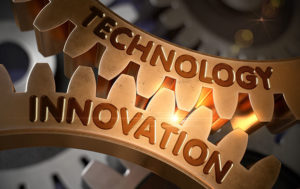Toyota on Monday officially unveiled its fuel cell sedan in an Internet video featuring Toyota Motor Corporation’s president and CEO Akio Toyoda. The announcement comes in advance of the Los Angeles Auto Show Nov. 21-30.
The new sedan, dubbed “Mirai” — which means “future” in Japanese — can travel up to 300 miles on a single tank of hydrogen, refuel in less than five minutes, and emit only water vapor.
To ensure that its drivers actually can fuel up, Toyota announced that it will collaborate with Air Liquide to develop and supply a phased network of 12 new hydrogen fueling stations in five states in the northeast corridor.
“Toyota’s vision of a hydrogen society is not just about building a great car, but ensuring accessible, reliable and convenient refueling for our customers,” said Toyota North America Chief Executive Officer Jim Lentz. “I am happy to announce that this vision will expand beyond the borders of California and give customers the opportunity to join the fuel cell movement.”
Through this partnership, the 12 fueling stations will be placed strategically throughout the greater New York and Boston areas, in an effort to blanket New York, New Jersey, Massachusetts, Connecticut and Rhode Island.
The Next Prius?
Toyota has been in the driver’s seat of the alternative fuel movement in the past, notably with the Prius, which it first introduced in 1997. Just as that car helped pave the way for early gas-electric hybrid automobiles, the Mirai could influence development of fuel-cell vehicles.
“It is another attempt by Toyota to weave a blanket to cover alternatives to fossil fuels,” said Justin Cupler, editor in chief of TopSpeed.com.
“Along with the hybrid and electric-powered vehicles, this is another option,” he told TechNewsWorld.
“There are many benefits that are both tangible and intangible,” noted Phil Gott, senior director of long range planning at IHS Automotive.
“For Toyota, they get credits to offset the emissions from other vehicles,” he pointed out.
“They also get kudos and bragging rights, and in people’s minds they are affirming their leadership that they got with the Prius,” Gott told TechNewsWorld. “Of course, they also get the marketing buzz of being among the first to bring a fuel cell vehicle to market.”
The Cost of Driving
While Toyota did not announce the American sticker price of the Mirai, its price in Japan is the equivalent of nearly US$70,000.
However, the target price for the American market could be closer to $50,000, based on some reports. That still could be viewed as a lot of money for a car that is just past the prototype stage.
“The initial cost is going to be an issue, so that could be a big deterrent,” said Cupler. “It isn’t entirely clear if the car or even its technology will ever take off.”
However, Toyota does “intend to produce a large number of these vehicles for the American market,” added Gott. “The challenge is [not only] the cost, but also the availability of the refueling stations.
“For this car to be reliable, the customer needs to be close to the hydrogen refueling station,” he pointed out. “Right now, those are far and few between.”
Clean Energy or Not?
Toyota has been addressing the issue by helping to build out the fuel cell refueling station infrastructure. At present, its new “car of the future” can’t make a cross-country trek, but earlier this year the company announced a $7.3 million loan to FirstElement Fuels to support operations and maintenance of 18 stations in California.
With the announcement of the stations in the northeast corridor, the infrastructure is beginning to come together, but another issue still may need to be addressed for fuel cell vehicles to be truly successful in reducing carbon emissions.
“Where does the energy that produces the hydrogen come from?” pondered Gott. “While we can produce electricity — which is used to make the hydrogen — from sun and wind, most electricity still comes from coal.
“That electricity from the sun could be used to power a home or an office,” he added.
“Instead of supporting clean energy, this technology is now adding a load on that sector and reduces the ability to use the solar energy to offset the demand from a coal plant,” Gott argued.
“In other words, the newest sources that require electricity should be attributed to the dirtiest sources of power — so that means that the hydrogen footprint of these cars is actually dirtier than a car running on gasoline,” he maintained.
“We need to be realistic when we call these ‘clean energy vehicles’ and really need to look at this from well to wheel,” Gott said, and understand “where the energy for the hydrogen is coming from.”























































With the exception of natural gas all "green" cars use the power grid as their power source. That is the fundemental problem with depending on electricity as a power source. Unless someone invents a method to create hydrogen without electricity these cars will never be clean.
Having said that, a hydrogen-based car is better than filling up a car with batteries and traveling only 40 miles per charge. I believe the future is hydrogen, but until the backend production problem is solved it will not be green.